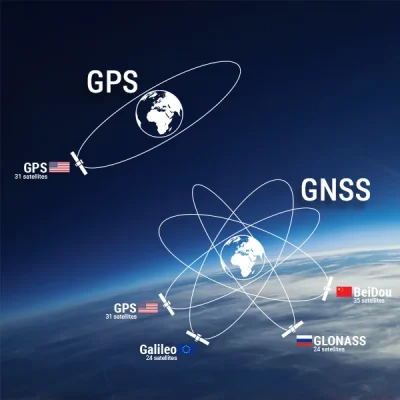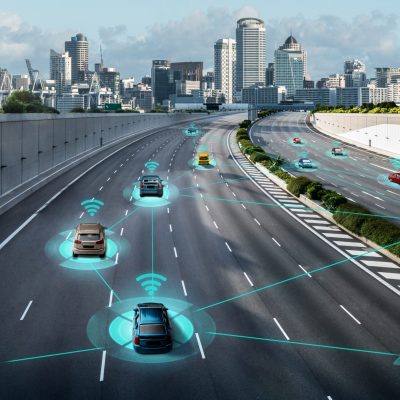What Are GNSS and GPS?

GNSS vs GPS. Most people think “GPS” is the entire satellite navigation world, but it’s actually only a part of something bigger.
GPS (Global Positioning System) is the American network of satellites used to pinpoint location.
GNSS (Global Navigation Satellite System). In the navigation industry, GNSS represents the framework of satellite networks used to determine position, velocity, and timing. GNSS ensures consistent performance even in signal challenging environments.
GNSS vs GPS: How They Differ in Performance?
Both technologies depend on satellites to deliver coordinates, but differ in scale and reliability. GPS tracks signals from a single network. GNSS draws data from several networks at once. This multi-constellation approach improves signal availability, reduces errors, and keeps navigation stable when buildings or terrain block the sky. For self driving systems, a lost signal means lost orientation. GNSS keeps those systems grounded in reality by cross checking signals in real time.
The Accuracy Factor, Why GNSS Is Better for Autonomous Vehicles?
Autonomous vehicles make split-second decisions based on where they think they are. A two meter drift could mean crossing into another lane.GNSS reduces that risk by providing centimeter level accuracy. That accuracy allows vehicles to identify lane markings, avoid damage, and follow optimized routes without relying solely on cameras. GNSS acts as a silent co-driver that continuously sends position data to keep vehicles safe.
Benefits of GNSS in Modern Navigation Systems

Global coverage Multiple constellations mean fewer blind zones.
Higher reliability Cross-checked signals reduce errors and drift.
Scalability Supports everything from delivery robots to autonomous fleets.
Integration with AI systems Machine learning models can adjust navigation paths based on live GNSS feedback.
Adaptability in harsh environments works perfectly in mountains, tunnels, and dense cities better than GPS alone.
These features make GNSS a backbone technology for smart mobility and industrial automation.
Challenges that GPS Faces
Traditional GPS remains powerful but aslo limited:
It depends on a single satellite constellation.
Signal loss can occur near skyscrapers or under heavy foliage.
Standard accuracy is around five to ten meters fine for phones, risky for robots.
That’s why modern navigation companies are shifting toward GNSS-based solutions.
The goal isn’t to replace GPS but to enhance it through global cooperation and real time correction services.
The Role of GNSS in Next-Gen Transportation
Tomorrow’s transportation systems will rely on data fusion, the blending of sensors, AI, and positioning signals.GNSS is the anchor of that ecosystem.
Paired with 5G networks, it enables continuous tracking for delivery fleets, emergency vehicles, and autonomous taxis. Imagine a city where every vehicle communicates its exact position to others nearby. GNSS brings reduced congestion, faster response times, and smarter traffic control.
Real World Use Case GNSS in ZATNAV’s Autonomous Vehicle Training Simulator
At ZATNAV, GNSS technology isn’t just studied; it’s simulated and optimized.
The Autonomous Vehicle Training Simulator replicates real-world signal conditions, satellite interference, multipath errors, and weather variations so engineers can test algorithms safely before deployment. This controlled environment speeds up innovation while lowering hardware risks.
The Future of Navigation GNSS-Driven Intelligence
GNSS accuracy with artificial intelligence. AI can predict signal degradation, switch between constellations, and correct path errors faster than any manual system. Together with edge computing, it will make autonomous mobility smoother, safer, and self learning.
Conclusion
When comparing GNSS vs GPS, the winner for autonomous navigation is clear.
GPS laid the groundwork, but GNSS builds the smart future offering global reach, higher reliability, and pinpoint accuracy.
For companies building or training autonomous systems, understanding and simulating GNSS behavior is no longer optional; it’s essential. Through advanced simulation tools, ZATNAV empowers innovators to test, refine, and deploy next generation navigation technologies with confidence.
Ready to see how GNSS transforms your autonomous projects?
Visit ZATNAV.com to explore intelligent navigation solutions built for the future.
